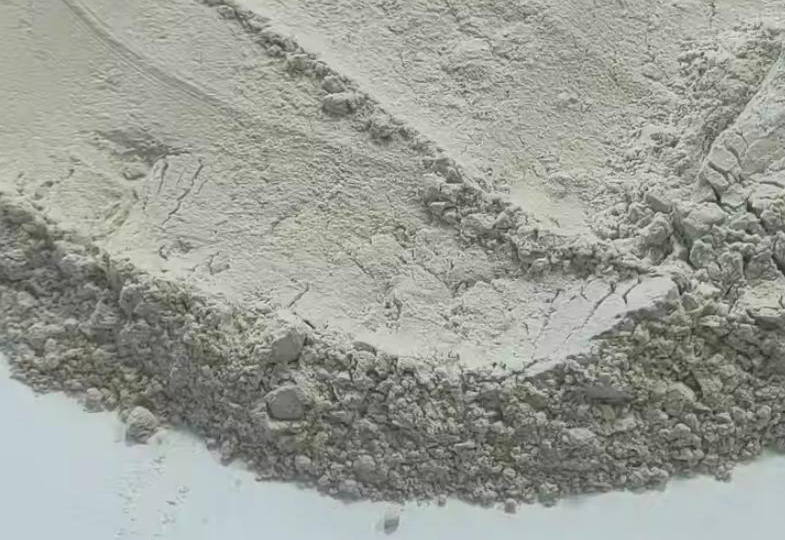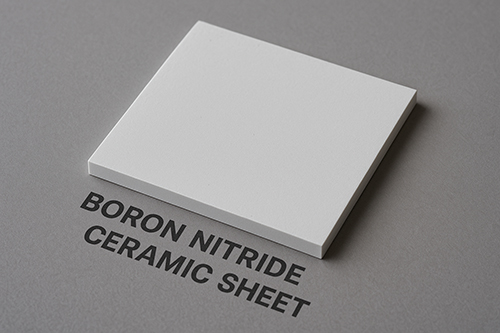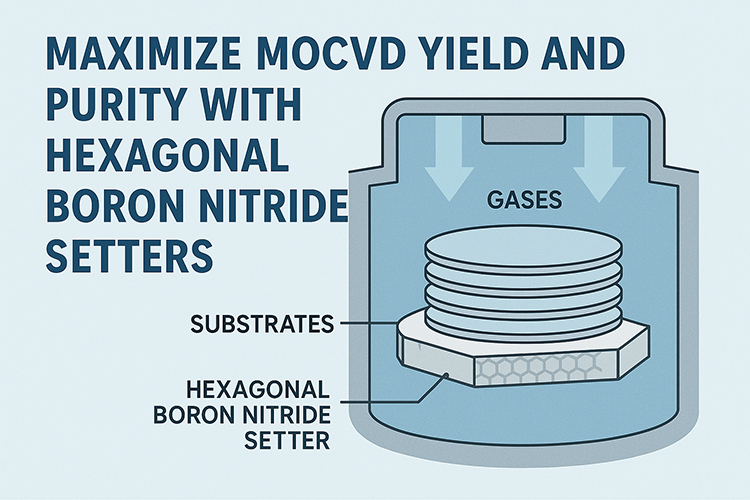Conductive Ceramic Salts Collection: Titanates, Zirconates, Tungstates & Vanadates
Conductive ceramic salts are important in modern technological applications due to their unique electrical, thermal, and structural properties. Their ability to conduct ions or electrons makes them indispensable components in devices like solid oxide fuel cells, capacitors, batteries, and sensors.
This article focuses on four primary categories of conductive ceramic salts: Titanates, Zirconates, Tungstates, and Vanadates. Each category is explored in terms of its structure, properties, synthesis methods, and applications, providing a comprehensive overview of their roles in advanced materials science and engineering.
1. Titanates
Titanates encompass a wide range of compounds characterized by the presence of titanium atoms bonded to oxygen. A prominent structural motif within this group is the perovskite structure (ABO₃), where 'A' and 'B' are cations of different sizes. Titanates exhibit remarkable electrical and thermal properties, including high dielectric constants and good ionic conductivity, especially at elevated temperatures.
Common synthesis techniques for titanates include:
- Solid-State Reaction: Involves mixing precursor materials and heating them to high temperatures to facilitate the formation of the desired phase.
- Sol-Gel Method: Utilizes a chemical solution process to produce fine, homogeneous powders with controlled stoichiometry.
- Hydrothermal Synthesis: Employs high-pressure and high-temperature conditions in an aqueous environment to synthesize crystalline titanates with specific morphologies.
Titanates are utilized in the following applications:
- Solid Oxide Fuel Cells (SOFCs): Serve as electrolyte materials due to their excellent ionic conductivity.
- Piezoelectric Devices: Employed in sensors and actuators because they can convert mechanical stress into electrical signals.
- Catalysts: Act as catalysts in oxidation reactions, enhancing reaction rates and selectivity.
2. Zirconates
Zirconates are compounds containing zirconium bonded to oxygen, often forming complex crystal structures like pyrochlore or fluorite types. They are known for their thermal stability, high dielectric constants, and good ionic conductivity, making them suitable for high-temperature applications.
Preparation techniques specific to zirconates include:
- Coprecipitation: Involves precipitating zirconium and other necessary ions from a solution to form a homogeneous precursor.
- Sol-Gel Process: Allows for the synthesis of zirconates with controlled composition and particle size.
- Hot Pressing: Utilizes high temperature and pressure to consolidate zirconate powders into dense ceramic materials.
Zirconates find applications in:
- Dielectric Materials: Used in capacitors and resonators due to their high dielectric constants and low dielectric losses.
- Thermal Barrier Coatings: Serve as protective layers in high-temperature environments, such as turbine blades, to prevent oxidation and corrosion.
- Ionic Conductors: Employed in sensors and fuel cells for their ability to conduct ions effectively at elevated temperatures.
3. Tungstates
Tungstates consist of tungsten atoms bonded to oxygen, forming various structural variants like scheelite (CaWO₄) and wolframite (FeWO₄). They exhibit interesting optical properties, such as strong luminescence, and possess moderate electrical conductivity, which can be enhanced through doping or structural modifications.

Common fabrication methods for tungstates include:
- Solid-State Synthesis: Mixing and heating tungsten oxide with other metal oxides to form tungstate phases.
- Hydrothermal Synthesis: Using aqueous solutions under high pressure and temperature to synthesize crystalline tungstates with specific morphologies.
- Sol-Gel Techniques: Producing fine tungstate powders with controlled particle sizes and homogeneity.
Tungstates are utilized in:
- Optoelectronic Devices: Used in lasers and photonic applications due to their favorable optical properties.
- Energy Storage: Incorporated into batteries and supercapacitors to enhance energy storage capabilities.
- Catalysts: Applied in petrochemical processes to facilitate oxidation and reduction reactions.
4. Vanadates
Vanadates are compounds containing vanadium bonded to oxygen, displaying structural diversity ranging from layered to framework structures. They exhibit both ionic and electronic conductivity, which can be tailored through compositional adjustments and structural modifications.
Techniques for creating various vanadate structures include:
- Solid-State Reaction: Combining vanadium oxide with other metal oxides and heating to achieve the desired phase.
- Hydrothermal Methods: Utilizing high-pressure and high-temperature aqueous conditions to form crystalline vanadates with specific structural features.
- Sol-Gel Processes: Allowing for the synthesis of vanadates with controlled morphology and homogeneity.
Vanadates are employed in:
- Cathode Materials in Lithium-Ion Batteries: Offering high capacity and stability for energy storage applications.
- Catalysts in Chemical Manufacturing: Enhancing reaction rates and selectivity in various chemical processes.
- Gas Sensors and Environmental Monitoring: Used in sensors for detecting gases due to their sensitive and selective conductive properties.
5. Comparative Analysis
Conductivity
Among the four ceramic salts, titanates and zirconates generally exhibit higher ionic conductivity, especially at elevated temperatures, making them suitable for fuel cells and similar applications. Vanadates also show significant ionic conductivity, particularly in battery cathodes. Tungstates typically have lower conductivity but can be enhanced through doping.
Thermal Stability
Zirconates stand out for their exceptional thermal stability, which is crucial for high-temperature applications like thermal barrier coatings. Titanates also possess good thermal stability, while vanadates and tungstates have varying degrees depending on their specific compositions and structures.
Optical Properties
Tungstates are notable for their strong optical properties, including luminescence, making them ideal for optoelectronic applications. Titanates and vanadates have moderate optical properties, whereas zirconates are primarily valued for their dielectric properties rather than optical characteristics.
Energy Storage Capabilities
Vanadates excel in energy storage applications, particularly as cathode materials in lithium-ion batteries due to their high capacity and stability. Titanates also contribute to energy storage through their use in fuel cells and capacitors. Zirconates and tungstates play more supportive roles in energy storage systems.
6. Conclusion
The exploration of Titanates, Zirconates, Tungstates, and Vanadates underscores the versatile and indispensable nature of conductive ceramic salts in contemporary material science and engineering. Their diverse properties and applications not only address current technological demands but also pave the way for future innovations. Continued research and development in synthesis techniques, doping strategies, and composite material formation are expected to further enhance their performance and expand their application horizons, solidifying their position as foundational materials in the advancement of next-generation technologies.
For more information about ceramic materials, please visit https://www.preciseceramic.com/.
References
- Duffy, M. J., & Jacobson, A. J. (2008). Understanding transport in perovskite materials for solid oxide fuel cells. Journal of Power Sources, 178(2), 501-505.
- Goodenough, J. B., & Kim, Y. (2010). Challenges for rechargeable Li batteries. Chemistry of Materials, 22(3), 587-603.
- Meyer, J., Patterson, D., & Abran, D. (2011). An overview of the characteristics and uses of zirconates in material science. Ceramics International, 37(9), 1457-1465.
- Whelan, J. M., & Cullity, B. D. (2013). Optical properties of tungstates for optoelectronic applications. Optical Materials, 35(2), 178-185.
- Xu, B., & Wu, M. (2015). Vanadates as catalysts in chemical manufacturing processes. Catalysis Today, 253, 95-103.
- Zhang, L., & Wang, Y. (2017). Advances in the synthesis of titania-based ceramics for energy applications. Journal of Materials Chemistry A, 5(30), 15985-15994.
{{item.content}}
LEVE A REPLY
{{item.children[0].content}}
{{item.content}}
LEAVE A REPLY
SUBSCRIBE OUR NEWSLETTER
- Boron Nitride in Cosmetics: Enhancing Performance and Sensory Appeal
- Maximize MOCVD Yield and Purity with Hexagonal Boron Nitride Setters
- What Are the Advantages and Uses of Boron Nitride Ceramic Sheet?
- The Compression Annealing Advantage for Pyrolytic Boron Nitride
- Beyond Insulation: The Surprising Spectrum of Ceramic Thermal Conductivity











